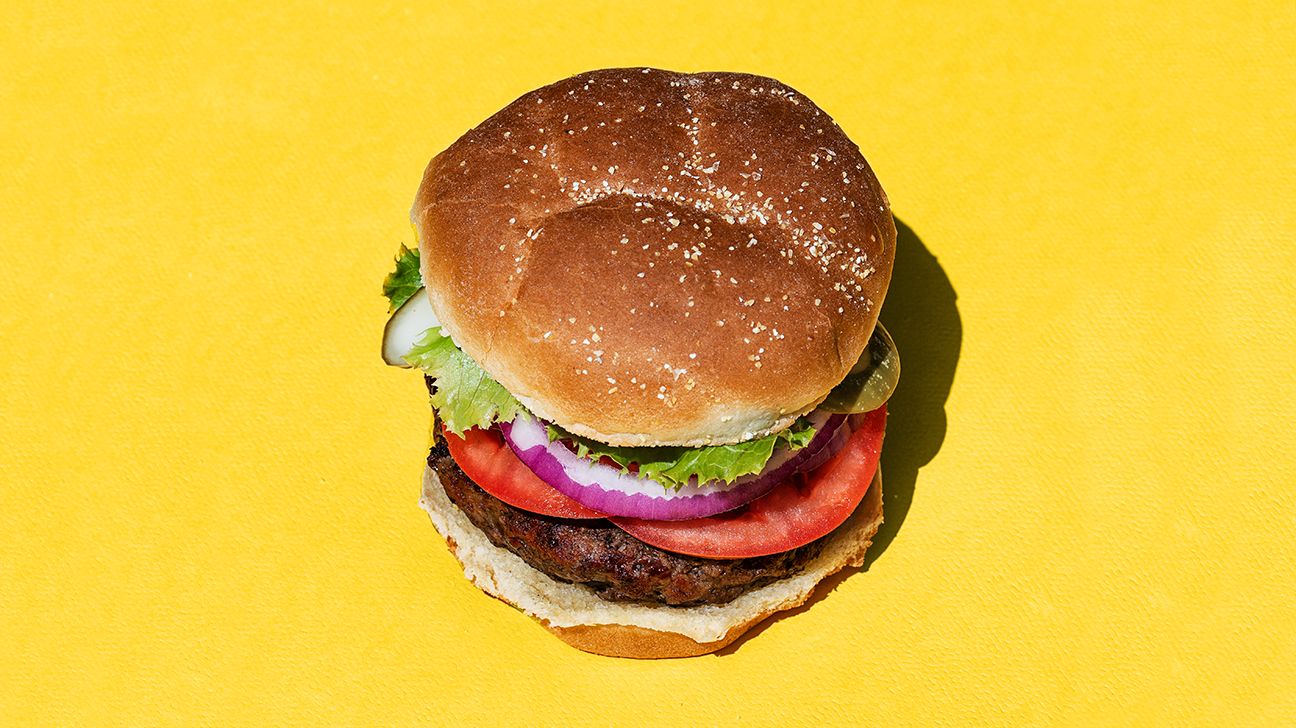Cholesterol: elusive but ever-present — like sasquatch or Taylor Swift. That’s about to change.
What, exactly, is cholesterol?
Everyone has cholesterol, a yellowy-white wax-like lipid (aka fat) that’s in every cell of your body. Cholesterol keeps your cells and organs working properly. It also plays a major role in hormone, vitamin, and digestive fluid production.
Cholesterol comes from two sources — 80 percent is naturally produced by your liver and intestines, and your diet accounts for the last 20 percent.
H to the L to the T
There are two types of cholesterol:
HDL (think “H” as in “healthy”) is often called the “good” cholesterol. It carries the bad cholesterol and other unhealthy substances to your liver. Your liver then works magic to break down and remove these toxins from your body.
LDL (think “L” as in “lousy”) is known as the “bad” cholesterol. This is the scary stuff people often think of when they hear the word “cholesterol” (dun dun duuun). High levels of it can gunk up your arteries and lead to serious health issues.
Triglyceride levels matter, too — that’s another type of fat in your blood that’s linked to a higher risk of heart disease and stroke.
High cholesterol is a creeper condition — it usually doesn’t have any symptoms. It can go undetected until you have blood work or a serious health event like a stroke or heart attack.
Physical symptoms
Some people may get cholesterol deposits under the skin of their eyelids. These small, flat, yellowish fat deposits — called xanthelasma — don’t usually affect your vision or your ability to blink.
Cholesterol can also deposit under the skin in other areas of the body such as elbows, knees, hands, or feet. These are called xanthomas.
Because high-cholesterol usually goes undetected, it’s a good idea to know the signs of complications like heart attack and stroke.
Coronary artery disease and heart attack
Coronary artery disease (aka heart disease) develops when cholesterol builds up in the arteries and blocks blood flow. It usually presents as angina (chest pain) or a heart attack.
Symptoms include:
- pain or discomfort in the chest, arms, or shoulder
- dizziness, light-headedness, weakness, nausea, or cold sweats
- shortness of breath
Peripheral artery disease
Peripheral artery disease (PAD) happens when cholesterol accumulations prevent blood from getting to your kidneys, stomach, and limbs.
Some symptoms to be aware of:
- tiredness in your legs
- pain, cramping, or aching in your legs or feet
- changes in the appearance of the skin or hair on your legs or feet
- a burning sensation or bluish color in your toes
- thickened toenails
- one leg or foot feeling cooler than the other
- sores on your legs or feet that heal slowly or not at all
Stroke
Cholesterol buildup that stops blood from getting to the brain may cause a stroke. Symptoms of a stroke come on very suddenly.
Common symptoms are:
- loss of feeling or strength in the face, arm, or leg (often on only one side of the body)
- difficulty speaking
- vision problems
- disorientation or confusion
- dizziness
- difficulty with walking, balancing, or coordination
- a really bad headache
If you suspect you or someone you’re with is experiencing a heart attack or stroke, call 911 immediately.
The only way to diagnose high cholesterol is for your doctor to order a simple blood test at a routine physical.
Crunching numbers
You’ll want to pay attention to these numbers on your next blood test:
- HDL level: typically, the higher the better
- LDL level: the lower the better
- triglycerides: the lower the better
- total cholesterol: the sum of your HDL, LDL, and 20 percent of your triglycerides
- cholesterol ratio: total cholesterol divided by your HDL
The ideal values for each of these depend on your age and sex.
Generally, adults should aim for:
- an HDL greater than 60 mg/dL
- an LDL under 100 mg/dL
- a triglyceride level under 150
- a total cholesterol of 200 or less
- a cholesterol ratio of 5 or less
Your doctor can advise you on the target ranges that make sense for your personal health profile.
High cholesterol happens when there’s too much cholesterol in your blood — the medical term for it is hypercholesterolemia. This condition affects almost 1 in 3 adults. Wow!
So, how does your blood get choked with this fat? Many of the potential causes of high cholesterol are lifestyle-related — diet, exercise, and so on. But family history and other medical issues can influence your cholesterol too.
These vices and habits may increase your risk of high cholesterol:
- excessive drinking
- smoking
- inactivity
- insufficient sleep
- too much stress
- a diet high in saturated fat
- a diet high in trans fat
Maybe she’s born with it
High cholesterol due to genetics is called familial hypercholesterolemia (FH). People with FH are born with high cholesterol because their bodies can’t process LDL correctly.
FH is one of the most common inherited diseases, affecting 1 in 220 adults. People with FH have a 13 times greater risk of heart disease. Untreated FH can result in chronically high cholesterol levels and heart disease.
Does that come with a side of cholesterol?
Several medical conditions also come with an elevated risk for high LDL cholesterol:
- diabetes
- eczema
- high blood pressure
- HIV
- underactive thyroid
- inflammatory diseases
- kidney disease
- obesity
- PCOS
Other risk factors
Age, sex, and ethnicity also factor into your risk profile.
High cholesterol increases with age. That’s because your biochemistry changes and your body functions less efficiently.
Some demographic groups — such as non-Hispanic white women — have higher total cholesterol rates.
So… what can you do to manage your cholesterol levels?
You can’t totally eliminate your risk, but some lifestyle tweaks may help curb risk factors.
Eat this…
Preventing high cholesterol is a tasty endeavor! Here are some ideas to get you started:
- Eat fiber-rich foods like oatmeal, beans, and legumes.
- Say “yes” to unsaturated fats like avocados and oils made from vegetables and most nuts.
- Fill your plate with a rainbow of fruits and veggies.
A quick internet search will lead you to more healthy recipes than you could possibly cook in a lifetime.
Not that
Cut back on alcohol and on foods high in sugar, salt, trans fats, and saturated fats. Trans fats are added to processed foods by manufacturers, and saturated fats are found in animal-based products.
It’s a good idea to limit your intake of:
- baked goods
- fast food
- fried foods
- full-fat dairy
- hydrogenated oils
- margarine
- red meat
- refined sugars
- refined grains
These foods are fine occasionally and in small amounts, but reducing or eliminating them can help naturally drop your LDL and total cholesterol levels.
Weight, weight — don’t tell me
The key is to maintain a healthy-for-you weight. Your body functions best when it’s at your optimal weight. Sound nutrition and exercise habits are lifelong essentials for weight management.
No butts about it
Smoking lowers HDL cholesterol and damages your blood vessels, increasing your risk of atherosclerosis, which can lead to stroke or heart attack.
If you need help ditching cigs, consult the many resources at your fingertips and reach out to your doctor.
Depending on your specific circumstances, your doctor may recommend one or more of these go-to treatments:
You’ve got to move it move it
Research has shown that exercise can increase HDL levels and lower triglycerides.
The U.S. Department of Health and Human Services recommends that adults get 150 to 300 minutes of moderate-intensity physical activity or 75 to 150 minutes of vigorous physical activity per week. And kids ages 6 to 17 should get an hour or more of moderate-to-vigorous activity per day.
Lipid-lowering therapy
Many medications can reduce LDL cholesterol. Let’s break it down:
Statins
You’ve seen the TV ads for the brand-name statins. These guys strike a one-two punch by helping your body restrict cholesterol production and clear more LDL from your blood.
Other medications
- Bile acid sequestrants use your bile to remove LDL from your blood.
- Niacin, a type of B vitamin, slashes the bad fat from your blood while simultaneously amping up the good stuff (HDL).
- Fibrates cut your liver’s output of LDL and expedite the removal of LDL from your body.
- Injectables are a newer type of medication mostly used by people with FH.
Natural therapies
Mother Earth’s medicine cabinet includes some potential remedies not yet supported by scientific research. Natural supplements like hawthorne, astragalus, flaxseed, and garlic are thought to help improve cholesterol, but more research is needed.
As with any supplement or complementary treatment, chat with your doctor before trying these.
Cholesterol affects every single cell, organ, and biological process that makes you you. Everyone has it, and everyone needs it — but the goal is to have more of the good kind and less of the less-good kind.
High cholesterol usually shows up without warning — there aren’t really any physical symptoms to rely on. If left untreated, high LDL cholesterol can lead to heart disease, stroke, and peripheral artery disease.
Get👏 a👏 regular👏 physical👏 and👏 blood👏 test! It’s the only reliable detection method.
High cholesterol is treatable. It’s usually managed with medication and lifestyle changes. There’s a lot you can do to help prevent (and reverse!) high cholesterol:
- Stick to a healthy diet.
- Get regular exercise.
- Don’t drink too much alcohol.
- Avoid smoking.
- Get a dog (obviously for the stress relief).


